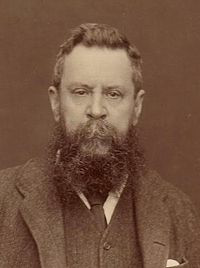



The Parish Church of St George the Martyr, Waterlooville

Some years ago, the St George’s annual Parish trip went to Arundel Castle where we learnt a little of the history of the Dukes of Norfolk. This series of articles follows on from that trip to put in greater detail some of the history behind this famous family. This month we cover the 13th Duke.
Sir Robert Howard, born 1385, died 1426
Sir John Howard 1st Duke, born 1420, died 1483 at Bosworth Field
Thomas Howard 2nd Duke, born 1444, died 1524
Thomas Howard 3rd Duke, born 1473, died 1554
Thomas Howard 4th Duke, born 1538, beheaded 1572 attainted
Sir Philip Howard Earl of Arundel, born 1557, died 1595 (Saint Philip)
Thomas Howard Earl of Arundel , born 1585, died 1646 (Collector Earl)
Henry Frederick Earl of Arundel, born 1608, died 1652
Thomas 5th Duke (from 1660), born 1627, died 1677
Henry 6th Duke, born 1629, died 1684
Henry 7th Duke, born 1655, died 1701
Thomas 8th Duke, born 1683, died 1732
Edward 9th Duke, born 1685, died 1777
Charles 10th Duke, born 1720, died 1786
Charles 11th Duke, born 1746, died 1815
Bernard Edward 12th Duke, born 1765, died 1842
Henry Charles 13th Duke, born 1791, died 1856
Henry Granville 14th Duke born 1815 died 1860
HENRY 15TH DUKE 1847-
The Duke’s main architectural interest was his churches. As well as the major churches in Arundel and Norwich, the Duke commissioned a series of churches in Sheffield, as well as several on his Sussex estate such as St Wilfrid at Angmering and the school and church in Shoreham. He was a major benefactor of both Westminster Cathedral and Brompton oratory. He was considered an expert in Gothic architecture and was often consulted by those wishing to use this form of building.
He attended the House of Lords regularly but rarely spoke, confining himself to subjects over which he had strong views such as education and the Irish affairs. It was Gladstone’s Home Rule for Ireland which was the strongest factor in driving the Duke into the arms of the Conservatives (He had been a Liberal all his life). For, though a Catholic, he felt strongly about any plan to dismember the United Kingdom. As a Catholic he was not entitled to be appointed Irish Viceroy, but many said that if he had been able to take up this post, it might well have avoided the disaster of partition and all the troubles which have followed since then.
Henry was made Postmaster General in 1895 and joined the Privy Council at the same time. He was hailed as the greatest Postmaster General ever. He resigned from that position in 1900 to enlist as a Captain in the Imperial Yeomanry, going out to fight the Boers and showing more patriotic fervour than sense for a man in his fifties. Perhaps, fortunately, he was injured falling off his horse so was spared a Boers bullet. The Duke frequently sat on Royal Commissions, and in 1903 was Chair of an important commission on Army reform. He naturally had a strong interest in his position as Earl Marshal and planned Queen Victoria’s funeral in 1903 despite an effort by the Lord Chamberlain to usurp the position. He worked hard on the Coronation of Edward VII and also his funeral 7 years later.
After the death of his son the Duke considered remarrying and for a time thought about marrying the daughter of the Marquess of Salisbury. In the event, seventeen years after the death of his first wife, in January 1904 the Duke remarried Gwendolen Constable-
When the 14th Duke had died he had received a simple 6 line obituary in the local Sheffield paper. When Henry died he received a whole page and his funeral and requiems were attended by most of the Sheffield dignitaries and officials. At the same time as his funeral at Arundel, concurrent Requiem Masses were sung in Westminster Cathedral, Brompton Oratory and all the major Catholic churches in England.
‘Thus it has pleased Almighty God to take out of this transitory life……the late and Most High and Mighty and most Noble Prince Henry-
He was succeeded by his son, Bernard Marmaduke as 16th Duke of Norfolk and our next issue will complete our three years exploration of the Dukes of Norfolk.
Tony Rice-
Autumn Edition 2012
The Dukes of Norfolk
